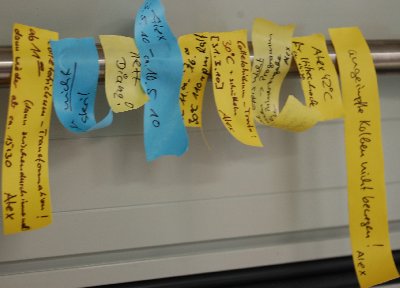Fabian Weihmann, Dipl. Biol.

Identifizierung und Charakterisierung sekretierter Effektorproteine von Colletotrichum graminicola
Plant pathogenic fungi exhibiting phases of biotrophic growth - like the hemibiotrophic Colletotrichum graminicola - need to avoid defence responses of their host. Currently, there is a lack of information about the reasons for the apparent failure of innate immunity to ward off the invading pathogen. We investigate the hypothesis that secreted fungal proteins may suppress plant defence reactions. At the moment, it is poorly understood which fungal genes are involved in these processes. The extent of their integration into regulatory networks remains uncertain. Furthermore, molecular communication between secreted fungal proteins and components of the host defence system remains elusive.
We investigate the following questions:
- Which subset of genes encoding secreted fungal proteins is specifically expressed during pathogenesis?
- Which gene products are essential for the establishment of the biotrophic phase, and, respectively, for switching to the necrotrophic phase?
- Where are these gene products localized?
- Do some of these gene products determine the host range?
- Which gene products do interfere with the regulation of plant defence?
Using the YSST-screen about 100 genes of the pathogen were identified that encode secreted proteins. A selection of those is analysed for being an effector or MAMP. Respective genes will be deleted, over-expressed in homologous and heterologous backgrounds to test for a putative role during pathogenesis on maize. GFP-fusions of fungal proteins are used to determine their localisation in planta.




